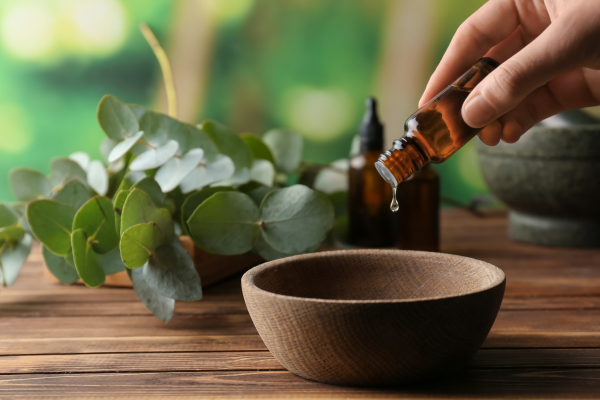

We have a majestic vintage Class A that in her glory days was the epitome of luxury on wheels. My heart swells with pride as I gaze upon its cherry-wood cabinets and gleaming ceramic tile flooring. The bedroom sanctum guarded by pocket doors that reach from floor to ceiling provides an illusion of privacy fit for royalty. Yet, alas, the loo—a sanctuary for matters both mundane and urgent—features a door with a curious 10-inch gap, an anomaly that defies logic.
Every trip to the loo becomes a communal affair as the entire coach whiffs witness to the call of nature. Then there’s the delicate dance of embarrassment when nature calls at the most inopportune moments. A frantic shuffle for the air freshener, cheeks flushed with mortification, desperately concocting elaborate schemes to conceal the evidence of bodily functions as a neighbor knocks at the door. Ah, the joys of RV life!
A deeper question, what lurks within that spray? Conventional air fresheners and their plug-in cousins have become a staple promising to eliminate odors and create a more pleasant indoor environment. Beneath the enticing scents lie a host of potential hidden dangers compromising health and well-being.
Of primary concerns are the synthetic fragrances, often containing a cocktail of volatile organic compounds (VOCs), including benzene, formaldehyde, and toluene, contributing to indoor air pollution. Prolonged exposure has been linked to respiratory irritation, headaches, and exacerbation of asthma symptoms.
Phthalates, chemicals used as fragrance carriers and plasticizers, have been implicated in endocrine disruption, reproductive issues, and developmental problems, particularly in children. The widespread use of room fresheners raises concerns about long-term health effects, especially in our tiny abodes.
Essential oils seem like a logical choice, however, also come with a set of do’s and don’ts. I must admit, I am a natural RVer, always looking for the healthier, greener side of things. I had no idea the essential oils spewing out of my ultrasonic diffuser were generating ozone, potentially irritating the respiratory tract and exacerbating existing respiratory conditions like asthma. Moreover, the interaction between ozone, water, and healthy, naturally occurring terpenes found in essential oils can lead to the formation of formaldehyde, a known carcinogen and respiratory irritant.
Terpenes boast antimicrobial, anti-inflammatory, and healing properties, making them a superior choice over conventional room fresheners. However, it’s crucial to select the appropriate oils and diffusion method to minimize the risk of formaldehyde formation in indoor spaces.
To ensure safety and efficacy, using high-quality, pure essential oils eliminates contaminants or additives that could compromise indoor air quality. Opt for essential oils from reputable companies such as NOW, Organic Aroma, Rocky Mountain, and Aura Cacia, easily found on the grocery store shelf, Amazon, or health food stores.
Low-terpene oils such tea tree oil (Melaleuca alternifolia), eucalyptus oil (Eucalyptus globulus), and lemon oil (Citrus limon), known for their antimicrobial and deodorizing properties, reduce the presence of odor-causing bacteria and mold in indoor spaces.
For a handy, quick loo-combative, a simple small spray bottle with water and essential oils is not going to have ill health effects. So, go ahead: Stock up on wonderful citrus scents like bergamot, lemon, lime, grapefruit, and orange oil. My favorite is a combination of vanilla, cinnamon, clove, and orange oil that will tame any gnarly aroma.
When Murphy’s law is at its best, I will gracefully dance through my coach to the front door like a ballerina in a famous ballet, delicately misting my essential oils, filling the air with the nostalgic aroma of Christmas past, thus eliminating any trace of a recent loo trip before I open my door.
Perhaps like you, I never gave a second thought to the typical essential oil diffuser; add water and a few drops of essential oils, and I was creating nirvana. Known as ultrasonic diffusers, the mechanism generates ozone and, when mixed with water and the essential oil, forms formaldehyde as it is dispersed into the air. Not to mention, it also spews polypropylene from the plastic insert, and if not cleaned regularly, the potential of mold exists.
To eliminate these negative effects, invest in a glass nebulizer waterless diffuser that atomizes essential oils using air pressure—a couple drops of oil, atomizes without ozone, and saturates a room quickly, eliminating smells from fried fish, steamed cauliflower, or a loo trip. As with any type of room freshener, run for no more than 30 minutes and be sure to crack a window.
Sniff in peace with a simple water bottle, water, and pure essential oils and a waterless nebulizer diffuser to create a fresher, healthier indoor environment in your rolling home.
|
Karen Langston is a full-time RVer and holistic orthomolecular nutritionist specializing in functional modalities to tame the belly storm. She loves hitting the road in search of Class A backroads, good food, and quirky adventures. Join her adventure at https://karenlangston.substack.com/ |


I love using essential oils, but never realized the potential risks with diffusers. Normally, they are for personal use, so I just rub them in my hands and inhale. With limited space in our class A, its hard to figure out a place for a diffuser anyway.
Hi Kim, I had no idea either until I started researching for this article. I got rid of my diffusers and purchased the glass nebulizer which is actually quite tiny and it can fit into any corner. We have a class A as well. I love my essential oils too.